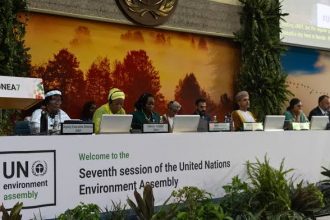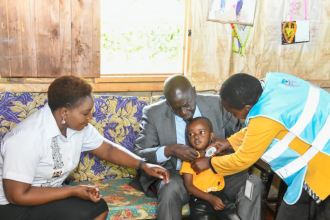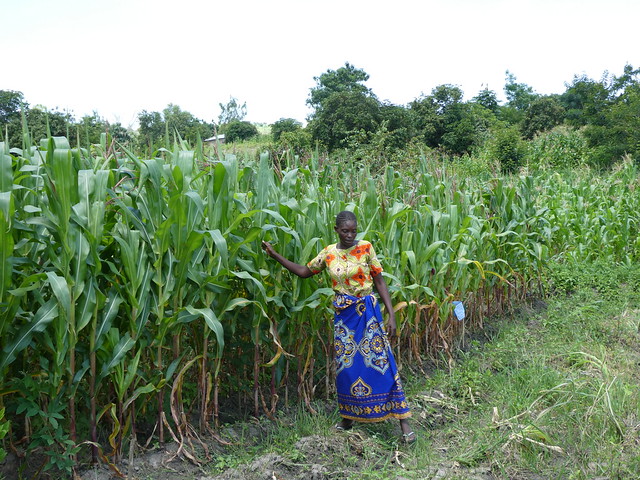By Sunil Madan
Across the vast landscapes of Sub-Saharan Africa, a quiet but determined revolution is taking root. It is unfolding in maize fields in Malawi, vegetable patches along Somalia’s river valleys, and the rolling highlands of Ethiopia. It is a revolution driven not by slogans or speeches, but by farmers—millions of them—seeking better tools, better seeds, and better opportunities to feed their families and earn a dignified living.
For decades, agriculture in Sub-Saharan Africa has operated below its potential. Though smallholder farmers produce 80 percent of the continent’s food, many remain trapped in low productivity, with yields far below global averages. Two-thirds of farmers use no fertilizer at all. Eighty-four percent use no pesticides. Only 1–3 percent of cropland is irrigated. Mechanization remains the lowest in the world. As a result, cereal yields hover at just around 1 ton per hectare in many regions—barely enough to sustain a family, let alone supply a growing continent.
The consequences are visible in Africa’s swelling food import bill, projected to hit USD 110 billion by 2025. Yet, behind these challenges lies a powerful opportunity. A generation of African farmers, innovators, governments, and entrepreneurs is proving that transformation is not only possible—it is already underway. 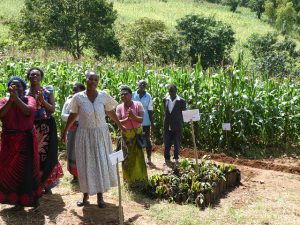
This feature explores five pillars of that transformation: mechanization, improved seeds and fertilizers, irrigation, access to markets and finance, and modern advisory services. Taken together, they hold the key to shifting African farming from subsistence to success—from hoe to hope.
Replacing drudgery with opportunity
For many African farmers, the hand-hoe remains a daily reality—a symbol of back-breaking labor that limits how much land can be cultivated and when. Sub-Saharan Africa has just 8 tractors per 100 square kilometers of arable land. Globally, the average is 200.
The result? Missed planting windows, small cultivated areas, heavy physical strain (especially for women), and high post-harvest losses.
But change is underway. Startups like Hello Tractor, often dubbed the “Uber for tractors,” are connecting farmers with tractor owners through mobile apps, allowing millions of additional hectares to be cultivated. Countries like Ethiopia and Nigeria are rolling out community tractor-hire centers, while Kenya and Ghana are working to expand mechanization corridors.
The benefits are dramatic: machine-powered land preparation can be 40 times faster and up to two-thirds cheaper than manual labor. Mechanization allows earlier planting, timely harvesting, and improved yields—turning agriculture into a business attractive to a younger generation.
The missed green revolution
The Asian Green Revolution of the 20th century was powered by hybrid seeds and fertilizer. Yet Sub-Saharan Africa still uses an average of just 17 kg of fertilizer nutrients per hectare—compared to 135 kg globally.
Many farmers still plant saved seeds, not because they prefer them, but because improved varieties are unaffordable or unavailable.
The results are stark: hybrid seeds can produce 30–50 percent more than traditional varieties, and with proper fertilization, yields can multiply severalfold.
Countries like Malawi have shown what is possible. Through sustained input subsidy programs, 77 percent of its smallholders now use fertilizer, contributing to major gains in maize production. Ghana’s “Planting for Food and Jobs” program and Ethiopia’s national fertilizer scale-up offer similar success stories. 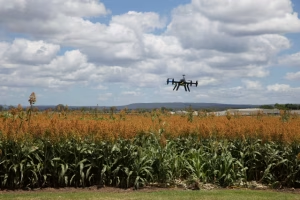
But availability alone isn’t enough. Farmers need knowledge—how much fertilizer to apply, when to plant, and how to manage pests. Without training, inputs can be misused or underused, dampening results. The next African agricultural leap must combine improved inputs with robust farmer education.
Ending Africa’s dependence on rainfall
Agriculture remains Africa’s most vulnerable economic sector, exposed to unpredictable rains and recurring droughts. Over 95 percent of farms rely solely on rainfall, and in most countries, less than 5 percent of arable land is irrigated.
Expanding irrigation changes everything.
In Kenya’s Siaya County, farmers using irrigation can harvest up to three times a year, while those still depending on rains harvest once. In Somalia, simple drip irrigation has boosted vegetable yields by up to 230 percent.
Large-scale irrigation projects like Kenya’s new Lower Nzoia scheme (8,000 hectares) are transforming entire regions. But small-scale, farmer-led irrigation—treadle pumps, drip kits, water harvesting—is just as crucial.
As climate change accelerates, irrigation becomes more than a productivity tool; it becomes survival. Countries like Ethiopia are actively expanding irrigated areas to shield farmers from drought shocks. When farmers control water, they control their destiny.
Turning farmers into entrepreneurs
Raising yields is only half the story. Farmers need places to sell their produce—and money to invest in inputs.
Many African farmers face poor rural roads, lack of cold storage, and dependence on middlemen who pay low farm-gate prices. Post-harvest losses reach 20 percent or more.
Innovative models are emerging:
- Kenya’s irrigation project links farmers with a guaranteed off-taker that supplies inputs and buys the harvest at fair prices.
- Nigeria’s Babban Gona provides credit, training, and warehouses, enabling farmers to sell when market prices peak.
- Digital platforms are helping farmers track prices, find buyers, and negotiate better.
Access to finance remains one of the largest gaps. Fewer than 1 percent of African farmers access formal credit, creating an annual financing shortfall of USD 26 billion.
Fintech solutions like mobile-based lending, digital credit scoring, and input-credit systems are starting to close that gap. Organizations like One Acre Fund combine loans with training, leading to much higher repayment rates and significant yield improvements.
When farmers access affordable credit, reliable markets, and good infrastructure, agriculture becomes a viable and lucrative enterprise.
Knowledge as the ultimate input
Even with seeds, tools, and water, farmers need the right information at the right time.
Extension services are the backbone of agricultural development, but Africa has a chronic shortage. The recommended ratio is 1 extension agent per 1,000 farmers; in Nigeria it’s often 1 per 10,000.
Digital technology is helping to bridge this gap. Mobile phones deliver:
- localized weather forecasts
- pest and disease alerts
- advisory messages on planting, fertilizing, and irrigation
- early warnings for floods and drought
In Ethiopia, farmers who received timely climate information increased maize yields by 27 percent and wheat by 17 percent.
Radio programs, call-in services, and apps in local languages make advisory services accessible even to farmers without smartphones. In Somalia, where climate shocks are frequent, strengthening extension services is essential to lifting yields and improving resilience.
Knowledge, ultimately, multiplies the value of every other input.
Toward an African agricultural renaissance
The vision is clear: a continent where the hoe is replaced by tractors, where farmers plant improved seeds in well-irrigated fields, where rural roads hum with commerce, and where farmers receive timely advice on their phones.
Countries like Kenya, Nigeria, Ethiopia, Malawi, Ghana, and Somalia are already laying the groundwork. The challenge now is scaling up solutions that work—and avoiding past mistakes such as poorly targeted subsidies or neglected training.
The payoff will be enormous. Farmers will earn more. Food insecurity will decline. Rural economies will grow. Africa’s dependence on food imports will shrink. And the continent will be better equipped to withstand climate shocks.
Agriculture is not the past; it is Africa’s future. The tools for transformation exist. The strategies are known. The need is urgent. The opportunity is vast.
What remains is action—a collective commitment to unlock the immense potential lying dormant in Africa’s fields and in the hands of its farmers.
If Africa chooses to invest boldly and wisely, the transformation from hoe to hope will not just be possible—it will be inevitable.
msunil77@gmail.com


